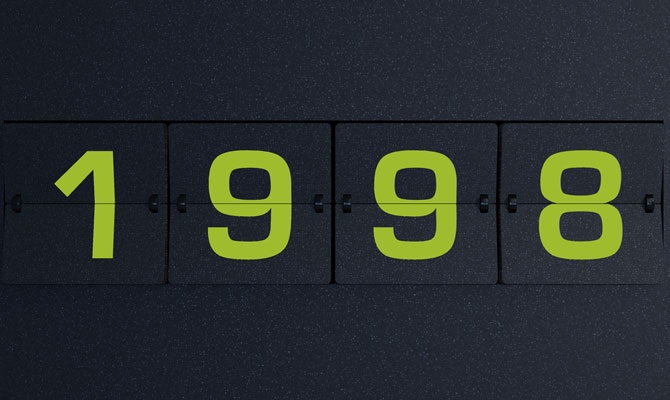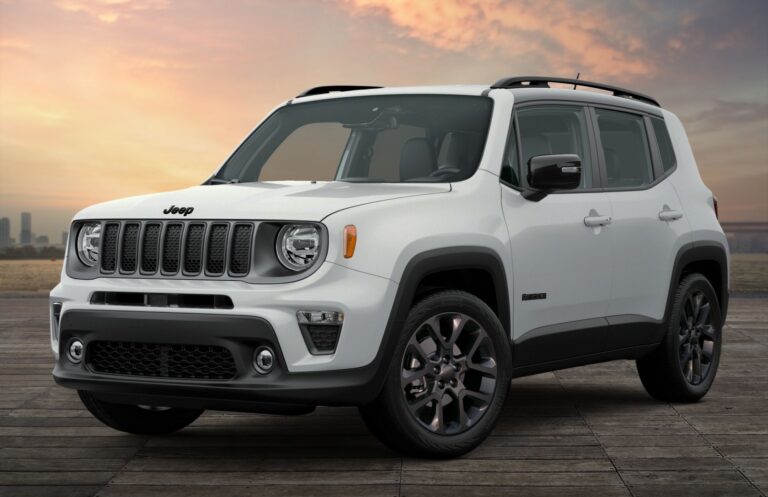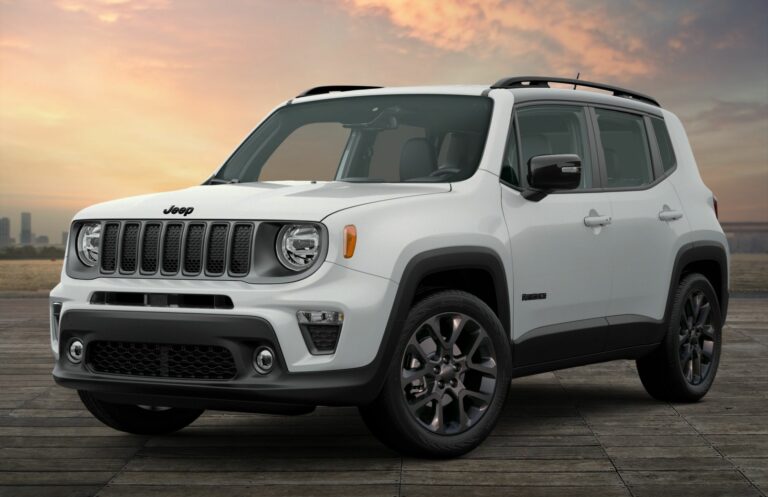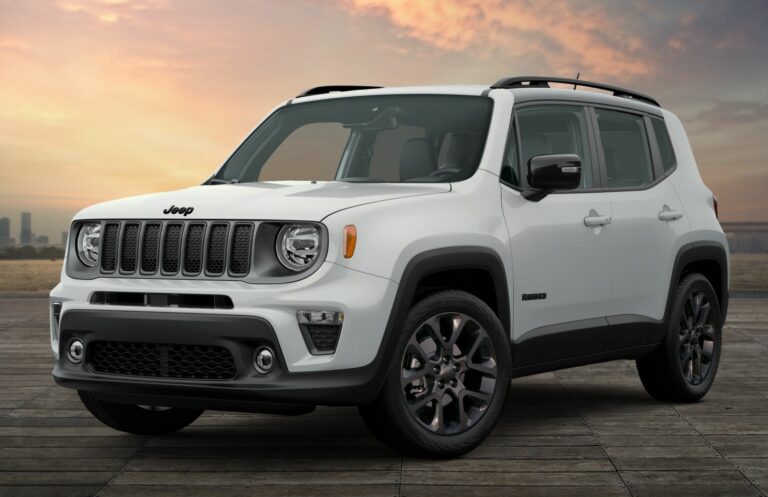1998 Jeep Cherokee Sport 4×4 For Sale: Your Guide to Acquiring a Legend
1998 Jeep Cherokee Sport 4×4 For Sale: Your Guide to Acquiring a Legend jeeps.truckstrend.com
The automotive landscape is constantly evolving, with new models boasting advanced technology and sleek designs. Yet, some vehicles transcend mere transportation, earning a place in the pantheon of motoring icons. Among them, the Jeep Cherokee XJ stands tall, and the 1998 Jeep Cherokee Sport 4×4 represents a particularly sweet spot in its storied production run. More than just a used SUV, a 1998 Jeep Cherokee Sport 4×4 for sale offers a unique blend of rugged capability, surprising practicality, and an undeniable classic appeal that continues to captivate enthusiasts and adventurers alike. This comprehensive guide will delve into everything you need to know about this legendary vehicle, helping you navigate the market and make an informed decision on acquiring your own piece of automotive history.
Why the 1998 Jeep Cherokee XJ Remains a Legend
1998 Jeep Cherokee Sport 4×4 For Sale: Your Guide to Acquiring a Legend
The Jeep Cherokee XJ, produced from 1984 to 2001, revolutionized the SUV market by offering a more car-like, unibody design that combined the comfort of a passenger car with the off-road prowess of a traditional Jeep. The 1998 model year is particularly significant as it represents a mature iteration of the XJ, benefiting from years of refinements without the later emissions-related compromises or the more polarizing facelift of the final years.
At the heart of its legendary status is the venerable 4.0-liter AMC PowerTech inline-six engine. This engine is renowned for its bulletproof reliability, strong low-end torque, and relatively simple design, making it a favorite among mechanics and off-roaders. Paired with a robust automatic transmission (typically the Aisin-Warner AW4), the 1998 Cherokee Sport 4×4 offers a powertrain combination that is both dependable and highly capable. Its unibody construction, while initially a departure for Jeep, proved incredibly strong and durable, contributing to its lighter weight and better on-road manners compared to many full-frame competitors, while still providing ample rigidity for challenging trails. The Cherokee XJ’s compact dimensions also make it surprisingly agile in urban environments and incredibly effective on tight off-road trails where larger vehicles struggle.
Key Features and Specifications of the 1998 Cherokee Sport 4×4
Understanding the specific features of the 1998 Cherokee Sport 4×4 is crucial for any potential buyer. The "Sport" trim level typically denoted a more basic, rugged offering compared to the Limited or Classic trims, focusing on utility and performance without excessive frills.
- Engine: The cornerstone is the 4.0L (3960cc) AMC PowerTech I-6 engine. It produces approximately 190 horsepower at 4,750 RPM and 225 lb-ft of torque at 3,000 RPM. This engine is known for its longevity, often exceeding 200,000 or even 300,000 miles with proper maintenance.
- Transmission: Most 1998 Sport 4×4 models came equipped with the Aisin-Warner AW4 4-speed automatic transmission. This is an electronically controlled, incredibly durable unit widely praised for its reliability and smooth shifts. A rare manual transmission option (AX-15 5-speed) might exist but is highly uncommon in the Sport trim.
- Transfer Case: The "4×4" designation means it comes with a transfer case, allowing for selectable four-wheel drive.

- Command-Trac (NP231): This is the more common transfer case for the Sport trim. It offers 2WD High, 4WD High (part-time, for loose surfaces only), Neutral, and 4WD Low. It’s a robust and reliable system perfect for serious off-roading.
- Selec-Trac (NP242): Less common in the Sport, but possible. This offers an additional "Full-Time 4WD" mode (similar to AWD), which can be used on pavement, alongside the part-time 4WD modes.
- Axles:

- Front: Dana 30 reverse-cut high pinion axle, known for its strength and good ground clearance.
- Rear: Typically, a Chrysler 8.25-inch axle (29-spline, stronger) or less commonly, a Dana 35 (27-spline, weaker). The Chrysler 8.25 is generally preferred by enthusiasts.
- Suspension: The XJ features a robust coil-spring front suspension with a three-link design and a leaf-spring rear suspension. This setup provides excellent articulation and durability for off-road use.
- Interior and Exterior: The Sport trim typically features durable cloth seats, manual windows (though power windows were an option), basic gauges, and a no-nonsense dashboard. Exterior-wise, it often had black fender flares, bumpers, and trim, along with 5-spoke alloy wheels, emphasizing its utilitarian roots.

What to Look For When Buying a 1998 Jeep Cherokee Sport 4×4 (Buyer’s Guide)
Purchasing a vehicle that’s over two decades old requires a discerning eye. Here’s a detailed checklist for evaluating a 1998 Jeep Cherokee Sport 4×4 for sale:
-
Rust is the Enemy: This is arguably the most critical factor. Check thoroughly for rust in these common areas:
- Rocker Panels: Beneath the doors, often concealed by plastic cladding.
- Floor Pans: Lift the carpets, especially near the footwells.
- Rear Quarter Panels: Around the wheel wells and behind the rear tires.
- Frame Rails: Especially where the unibody frame rails meet the rear leaf spring mounts.
- Hatch Area: Around the rear window and tailgate hinges.
- Underbody: Inspect exhaust mounts, crossmembers, and suspension components. Surface rust is often manageable; widespread or structural rust is a deal-breaker.
-
Engine Health: The 4.0L is tough, but not indestructible.
- Leaks: Check for oil leaks (common from the rear main seal, valve cover, oil filter adapter), coolant leaks, and power steering leaks.
- Cooling System: Inspect the radiator (plastic end tanks crack), water pump, thermostat housing, and hoses for leaks or signs of neglect. Overheating is a common issue if not maintained.
- Sounds: Listen for excessive valvetrain noise (tappets), knocking (could indicate bearing wear), or irregular idle.
- Oil Pressure: A healthy 4.0L should show around 40 PSI at idle when warm. Low pressure is a concern.
-
Transmission & Transfer Case:
- AW4: Shifts should be smooth and predictable, without harsh jerks or excessive slipping. Check the fluid level and condition (should be reddish, not brown or burnt-smelling).
- Transfer Case: Ensure 4WD engages smoothly in all ranges (4-Hi, 4-Lo). Listen for grinding or clunking noises. Check for leaks around the seals.
-
Axles and Driveshafts:
- U-Joints: Check for play in the universal joints on both driveshafts and front axle shafts. Clunking during acceleration or deceleration can indicate worn U-joints.
- Differentials: Look for fluid leaks from the differential covers. Listen for humming or whining noises, which could indicate worn gears or bearings.
-
Suspension and Steering:
- "Death Wobble": This infamous XJ issue is caused by worn steering or suspension components (track bar, tie rods, ball joints, control arm bushings). Shake the steering wheel and check for excessive play.
- Shocks & Springs: Look for leaking shocks or sagging springs, especially if the vehicle has a lift kit installed poorly.
- Bushings: Inspect control arm bushings, leaf spring bushings, and sway bar bushings for cracks or deterioration.
-
Electrical System: Test all lights, power windows (if equipped), radio, HVAC fan, and gauges. The dashboard often develops cracks.
-
Interior Condition: While a Sport trim is basic, excessive wear on seats, headliner, or carpets can indicate neglect.
-
Maintenance Records: A history of regular oil changes, coolant flushes, and part replacements is a huge plus. This shows the previous owner cared for the vehicle.
-
Test Drive: Take it for a good 20-30 minute drive. Drive on varied roads, including some bumps. Test the brakes (should be firm, no pulling), steering (should track straight), and acceleration. Listen for any unusual noises.
Benefits of Owning a 1998 Jeep Cherokee Sport 4×4
Despite its age, the 1998 XJ Sport 4×4 offers compelling advantages:
- Unrivaled Off-Road Capability: Its compact size, solid axles, excellent approach/departure angles, and robust 4×4 system make it a formidable off-road machine, capable of tackling trails that would leave many modern SUVs stranded.
- Legendary Reliability: The 4.0L engine is famous for its durability, meaning fewer unexpected breakdowns if properly maintained.
- Ease of Maintenance & Parts Availability: The XJ’s simple design makes it relatively easy for DIY mechanics to work on. Parts, both OEM and aftermarket, are incredibly abundant and often inexpensive.
- Vast Customization Potential: An enormous aftermarket exists for lift kits, bumpers, armor, lighting, and performance upgrades, allowing owners to tailor the vehicle precisely to their needs and preferences.
- Classic Status & Value Retention: Well-preserved XJs are holding and even appreciating in value as their classic status grows. It’s an investment that offers both utility and potential future returns.
- Practicality: With four doors and a decent cargo area, it’s still a perfectly usable daily driver for many, offering a robust alternative to modern crossovers.
Potential Challenges and Solutions
No vehicle is perfect, especially one from 1998. Be aware of these potential challenges:
- Fuel Economy: The 4.0L engine is not known for its fuel efficiency, typically returning 15-18 MPG. Solution: Accept it as part of the package; consider it the price of admission for rugged capability.
- Rust: As mentioned, rust is a perennial battle, especially in areas with road salt. Solution: Thorough pre-purchase inspection; preventative undercoating; address any new rust spots immediately.
- Age-Related Wear: Components like bushings, seals, and sensors will eventually fail due to age and mileage. Solution: Budget for ongoing maintenance and proactive replacement of common wear items.
- "Death Wobble": This can be unsettling. Solution: It’s almost always due to worn steering/suspension components (track bar, tie rods, ball joints, control arm bushings). Diagnose and replace the culprit(s).
- Basic Interior Comfort/Features: Compared to modern vehicles, the XJ’s interior is sparse. Solution: Aftermarket stereo, seat covers, and other small upgrades can improve comfort without sacrificing the classic feel.
Making the Purchase – Tips for a Successful Acquisition
- Set a Realistic Budget: Beyond the purchase price, factor in immediate maintenance (fluid changes, tune-up), potential repairs (tires, brakes, suspension components), and insurance.
- Get a Pre-Purchase Inspection (PPI): Even if you’re mechanically inclined, have a trusted independent mechanic specializing in Jeeps (or older vehicles) perform a comprehensive inspection. This can uncover hidden issues and give you leverage for negotiation.
- Negotiate Based on Condition: Use any identified flaws or required repairs as points for negotiation. Don’t be afraid to walk away if the price doesn’t align with the vehicle’s condition.
- Check Title and VIN: Ensure the title is clean and matches the VIN on the vehicle. Look for signs of flood damage or salvage history.
- Be Patient: Finding a well-maintained 1998 Jeep Cherokee Sport 4×4 can take time. Don’t rush into a purchase. The right one will eventually appear.
1998 Jeep Cherokee Sport 4×4 For Sale: Estimated Price Guide
Please note that these prices are estimates and can vary significantly based on the vehicle’s exact condition, mileage, maintenance history, modifications, geographical location, and current market demand.
| Condition | Mileage Range | Typical Price Range (USD) | Key Factors Influencing Price |
|---|---|---|---|
| Poor / Project | 200,000+ | $1,500 – $3,500 | Significant rust, major mechanical issues, non-running, extensive repairs needed. |
| Fair | 150,000 – 200,000 | $3,500 – $6,000 | Moderate rust, needs various repairs (e.g., suspension, leaks), cosmetic flaws, basic functionality. |
| Good | 100,000 – 150,000 | $6,000 – $9,500 | Minor to no significant rust, well-maintained, all major systems functional, minor cosmetic wear, good tires. |
| Excellent | Under 100,000 | $9,500 – $15,000+ | Minimal to no rust, meticulously maintained, low original miles, pristine interior/exterior, may have tasteful, high-quality modifications. |
| Collector Grade | Under 50,000 | $15,000 – $25,000+ | Exceptionally low mileage, showroom condition, all original, rare options, highly sought after by collectors. |
Disclaimer: These figures are general estimates. Always conduct your own research and get a professional inspection.
Frequently Asked Questions (FAQ)
Q: Is the 4.0L engine in the 1998 Cherokee Sport 4×4 truly reliable?
A: Yes, it’s widely regarded as one of the most reliable engines ever produced by Chrysler/AMC. With proper maintenance (regular oil changes, cooling system care), it can easily last for 200,000 to 300,000 miles or more.
Q: What is "death wobble" and how is it fixed?
A: "Death wobble" is a violent, uncontrolled shaking of the front end, usually triggered by hitting a bump at speed. It’s caused by worn steering and suspension components, most commonly the track bar, but also tie rod ends, ball joints, and control arm bushings. It’s fixable by diagnosing and replacing the worn parts.
Q: What kind of fuel economy can I expect from a 1998 Jeep Cherokee Sport 4×4?
A: Don’t expect great fuel economy. On average, you can anticipate around 15-18 miles per gallon (MPG) combined, varying with driving conditions, maintenance, and modifications.
Q: Are parts hard to find for a 1998 Cherokee XJ?
A: Absolutely not. The XJ was produced in massive numbers for nearly two decades, and its popularity among enthusiasts means that OEM, aftermarket, and used parts are incredibly abundant and generally affordable.
Q: Can a stock 1998 Jeep Cherokee Sport 4×4 really go off-road?
A: Yes, even in stock form, the Cherokee XJ is a highly capable off-road vehicle due to its solid axles, compact size, and robust 4×4 system. It was designed from the ground up for capability.
Q: What’s the difference between Command-Trac (NP231) and Selec-Trac (NP242) transfer cases?
A: The NP231 (Command-Trac) is a part-time 4WD system, meaning its 4WD modes (4-Hi and 4-Lo) should only be used on loose or slippery surfaces. The NP242 (Selec-Trac) offers an additional "Full-Time 4WD" mode (similar to AWD) that can be used on pavement, making it more versatile for varied conditions.
Q: Is rust a major concern with these Jeeps?
A: Yes, rust is the primary enemy of the XJ, especially in areas where road salt is used. Thoroughly inspect the rocker panels, floorboards, rear quarter panels, and unibody frame rails.
Q: Is it a good daily driver for modern times?
A: If well-maintained, a 1998 XJ can certainly serve as a reliable daily driver. However, it lacks many modern amenities, safety features (e.g., airbags are basic), and the ride quality might be firmer than contemporary SUVs. Its simplicity is part of its charm for many.
Conclusion
The 1998 Jeep Cherokee Sport 4×4 for sale is more than just a used vehicle; it’s an opportunity to own a piece of automotive history that continues to prove its worth on and off the pavement. Its legendary 4.0L engine, robust 4×4 system, and timeless design make it a highly desirable choice for adventurers, DIY enthusiasts, and anyone seeking a vehicle with character and genuine capability. While purchasing an older vehicle requires careful inspection and a realistic budget for ongoing maintenance, the rewards of owning a well-preserved XJ are immense. It’s a testament to simple, rugged engineering, offering an unparalleled blend of utility, reliability, and sheer fun that few modern SUVs can match. If you’re looking for an iconic, capable, and customizable SUV that will stand the test of time, the 1998 Jeep Cherokee Sport 4×4 deserves your serious consideration.




